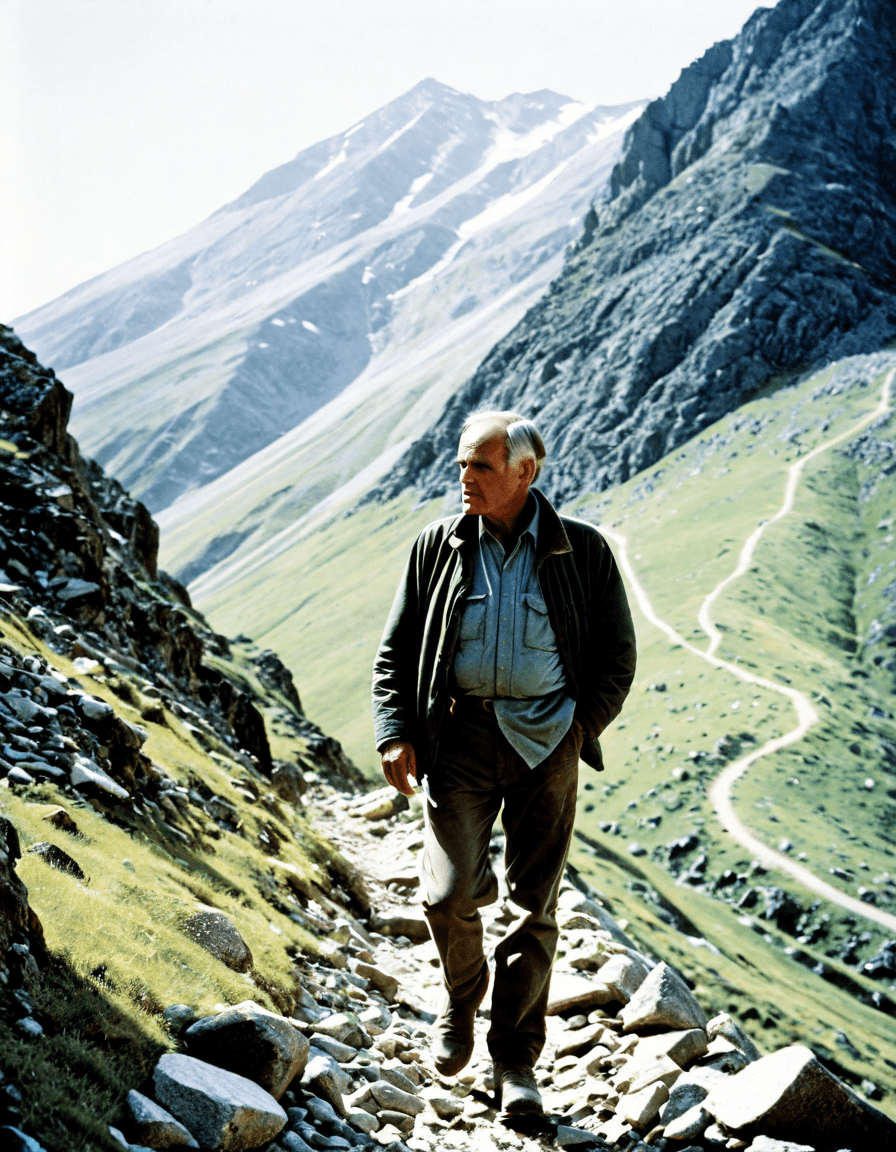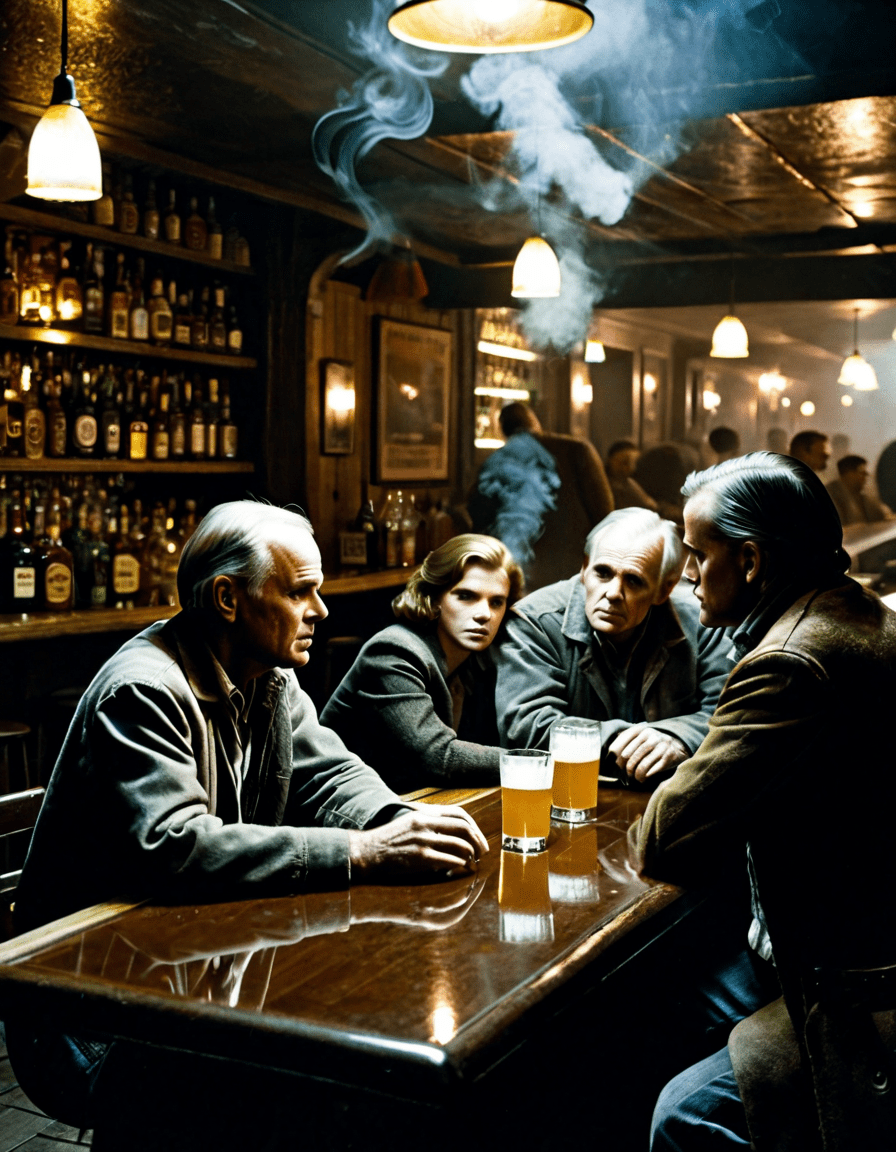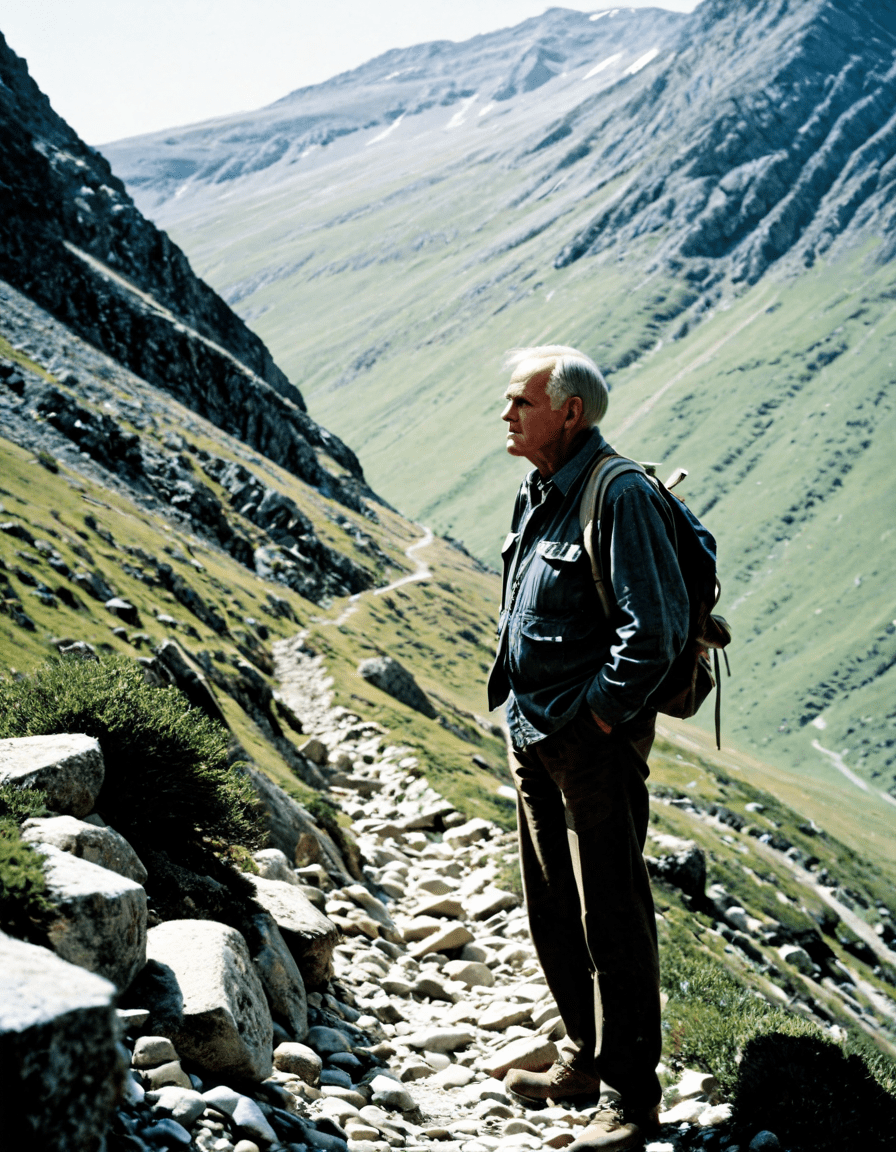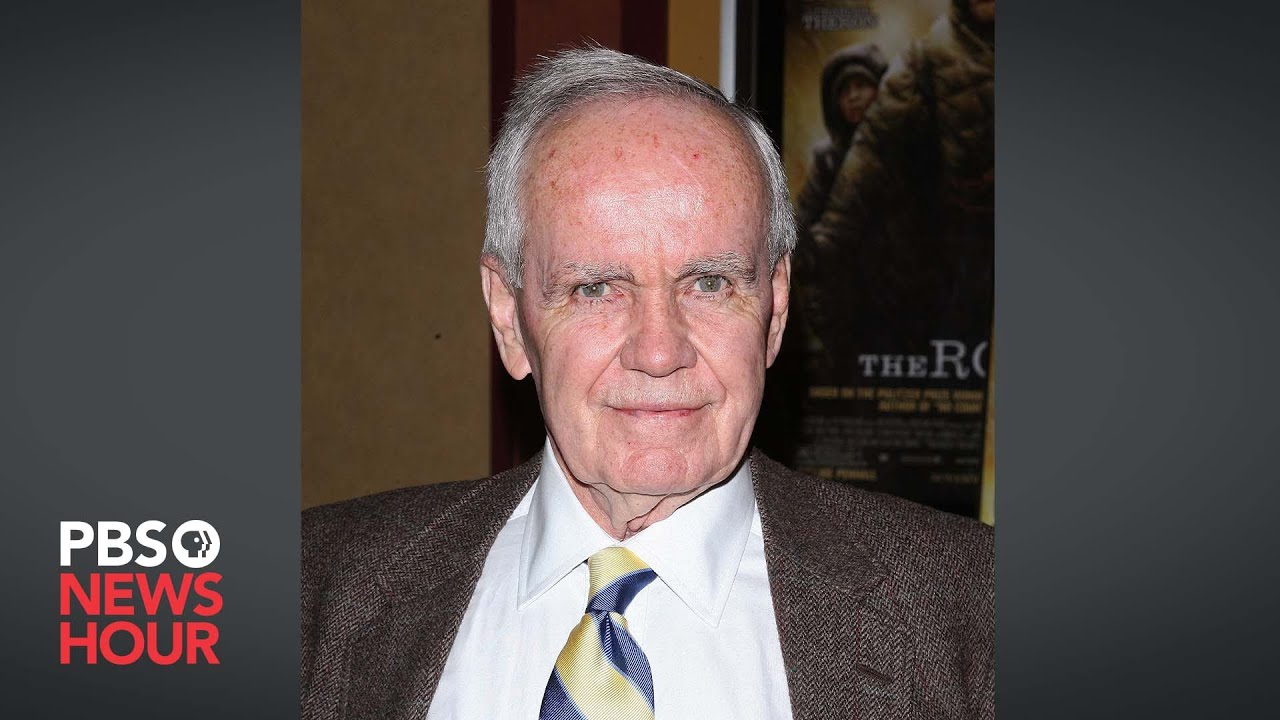Cormac McCarthy stands as one of the preeminent figures in American literature, synonymous with narratives that dive deep into the human condition through stark, unrelenting prose. His works often brim with themes of violence, survival, and existential dread, echoing a uniquely American ethos. As audiences flip through the pages of his novels, one can’t help but feel the weight of his words, just as one might become enveloped in a haunting cinematic experience. This exploration delves into the key elements of McCarthy’s artistry and its significant impact on contemporary cinema and television.
7 Essential Themes in Cormac McCarthy’s Works and Their Cinematic Influence
Cormac McCarthy’s oeuvre is rich with themes that both define his literary legacy and inspire filmmakers and actors across genres. Ready to journey through his dark, compelling world? Buckle up as we unpack seven essential themes in McCarthy’s works and their interpretations through film. Actors like Domhnall Gleeson and Cillian Murphy, alongside others, artfully breathe life into these ideas.
1. The Duality of Human Nature: Good vs. Evil
In McCarthy’s narratives, characters often grapple with moral ambiguity, a tug-of-war between good and evil. Take “No Country for Old Men,” for instance. The malevolence of Anton Chigurh, portrayed chillingly by Javier Bardem, collides with Sheriff Bell’s steadfast morals (Tommy Lee Jones). This struggle raises existential questions and inspires actors like Cillian Murphy, known for roles that blur the lines between heroism and villainy. Just think of how these characters force us to examine our ethics, making us question where we truly stand.
2. Isolation and the Human Condition
Isolation permeates McCarthy’s work like a dense fog. In “The Road,” we watch a father (played by Viggo Mortensen) desperately cling to his son amidst a post-apocalyptic world. The bond they share underscores the fragility of human connections. Likewise, Domhnall Gleeson often finds himself in films exploring similar themes, echoing McCarthy’s ethos of desperation and solitude. The isolation feels all too palpable, leaving audiences clutching their seats and grappling with the fragility of they may take for granted.
3. The Destructive Nature of Violence
McCarthy has a knack for portraying violence in raw, unfiltered ways, especially in works like “Blood Meridian.” The film adaptations dive into the wickedness that lives within us. Barry Keoghan, with his ability to articulate darkness, proves to be an apt candidate for embodying McCarthy’s turbulent characters. These narratives challenge audiences to confront uncomfortable truths, often leaving us shaken long after the credits roll.
4. The Influence of Landscape on Narrative
The landscapes in McCarthy’s works often feel like characters themselves, shaping the mood and the story’s heartbeat. Films like “The Counselor” excellently highlight the stark American Southwest, each frame resonating with McCarthy’s vivid descriptions. Kieran Culkin, who’s adept at adapting to various settings in his projects, embodies this thematic depth. The visual representation of McCarthy’s terrain serves to underscore how intimately linked the character and environment truly are.
5. Existential and Philosophical Themes
McCarthy’s prose often spirals into existential inquiries that probe into life’s very essence. Dermot Mulroney frequently graces films that delve into the absurdity of existence, echoing McCarthy’s contemplative tones. The characters that embrace these philosophical dilemmas offer audiences an opportunity to wrestle with their own beliefs about life and purpose. It’s a cinematic exploration that goes well beyond simple entertainment, inviting deep introspection.
6. The Absurdity of Law and Order
In McCarthy’s works, the struggle against oppressive forces paints a vivid picture of the chaotic complexities of law enforcement. Kieran Culkin, in his films, often mirrors this internal conflict, showcasing the madness inherent in societal structures. This exploration illustrates McCarthy’s fascination with the flawed human frameworks of justice. As audiences, we are left pondering: who truly enforces order when chaos reigns?
7. The Cycle of Life and Death
Life and death are omnipresent themes in McCarthy’s narratives. Characters are frequently faced with life-altering choices that starkly highlight their mortality. Films adopting this tone, featuring actors like Cillian Murphy, delve into heavy emotional themes and explore the burdens of existence. These portrayals push us to weigh our lives’ decisions and reflect on what it means to truly live.

The Cinematic Legacy: Adaptations and Beyond
The transition of McCarthy’s literature to the screen often meets mixed reviews, yet there’s no denying the vigor with which films interpret his raw themes. Classic adaptations, such as “No Country for Old Men” and “The Road,” serve not just as translations but extensions of McCarthy’s profound narrative style. Directors like the Coen Brothers and John Hillcoat effectively capture the essence of McCarthy’s prose, showcasing how literary grit transitions seamlessly into cinematic narratives.
Through these adaptations, audiences gain access to the intense emotional landscapes painted with McCarthy’s language. The explorations of solitude, morality, and violence echo in performances that highlight the nuances of human experience. Today’s emerging actors reflect McCarthy’s themes, portraying complex characters molded by their truths.
In essence, the interplay between Cormac McCarthy’s literary themes and their cinematic interpretations stands as a testament to the lasting legacy of his work. The emotional weight, philosophical undercurrents, and stark depictions of the American experience continue to inspire both readers and viewers alike. Whether in literature or film, McCarthy’s insights into humanity’s darker corners find new life, enriching cultural conversations for years to come. Remember to check out some cinematic gems next time you’re streaming for a taste of McCarthy-inspired storytelling that resonates with our own journeys.
As we prepare for the holidays, perhaps a McCarthy adaptation will find its way into your Thanksgiving plans, offering a stark contrast to classic family films like Miracle on 34th Street. And for those looking to unwind after a heavy watch, why not embrace some levity with a quirky game like the Blowjob Simulator? What does this say about our tastes? If you’re intrigued by the Daniel Boone national forest, just wait till you dive into the landscape artistry of McCarthy’s world. As we reflect on the performances of celebrated actors and directors, it’s clear that McCarthy’s influence will continue to shape cinematic narratives.
Cormac McCarthy: The Master of Gritty American Literature

The Man Behind the Grit
Did you know Cormac McCarthy has a thing for the dramatic? He’s got a flair for the macabre that really sets him apart in American letters. Before diving into writing, McCarthy spent time on the road, earning a living with a few odd jobs that included selling a range of items from postcards to fishing tackle. His experiences might just explain the raw, gritty realism found in works like Blood Meridian and The Road. Interestingly, as the American landscape bleeds into his narratives, certain British Actors have drawn from his characters to enrich their own performances, proving that McCarthy’s influence is, quite literally, world-spanning.
Music as Inspiration
Music has always threaded its way through McCarthy’s life and writing. His admiration for lyrical storytelling is evident, especially in the haunting melodies of artists like Alison Krauss. In fact, one could draw parallels between her emotive ballads and the deep existential questions found in his novels. Imagine a road trip soundtrack featuring Krauss while reading All the Pretty Horses—it’s a thoughtful mix that certainly complements the themes of longing and loss that McCarthy captures. And speaking of roads, there’s quite the diverse range of so-called Docs lab type films that have drawn inspiration from McCarthy’s intense storytelling; directors contemplate how to visualize his vast American vistas on screen, enhancing the cinematic landscape created by his powerful prose.
The Grit and Grind
Writing isn’t McCarthy’s only talent; he also has a practical side. Famously, he uses a typewriter, shunning technology to forge his prose. It’s reported that the only modern tool he could be tempted by is a tube of Bengay, particularly after those long hours of writing. The way McCarthy embraces discomfort both physically and artistically speaks volumes to the themes of endurance seeped throughout his works. But let’s not forget, he also has a taste for the unusual—foregoing fame, he’s instead cherished his reclusive nature, which adds an element of intrigue about his personal life, much like the cunning schemes you’d find in a story starring Deadpool & Wolverine. It seems every aspect of McCarthy’s existence is steeped in the gritty realism he’s famous for.








